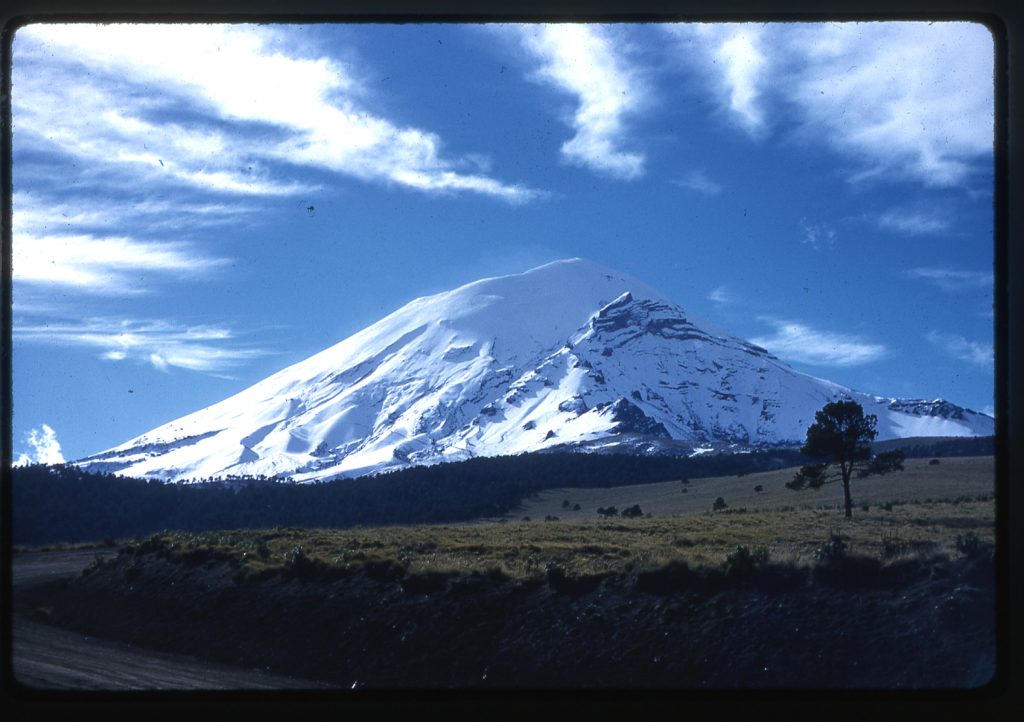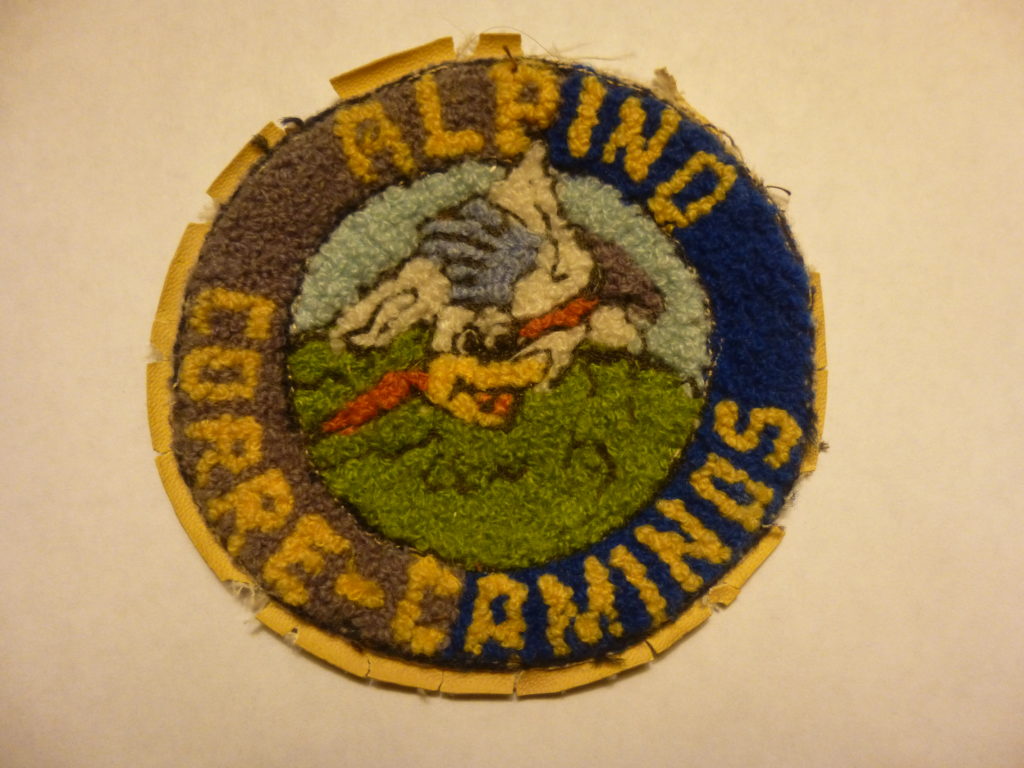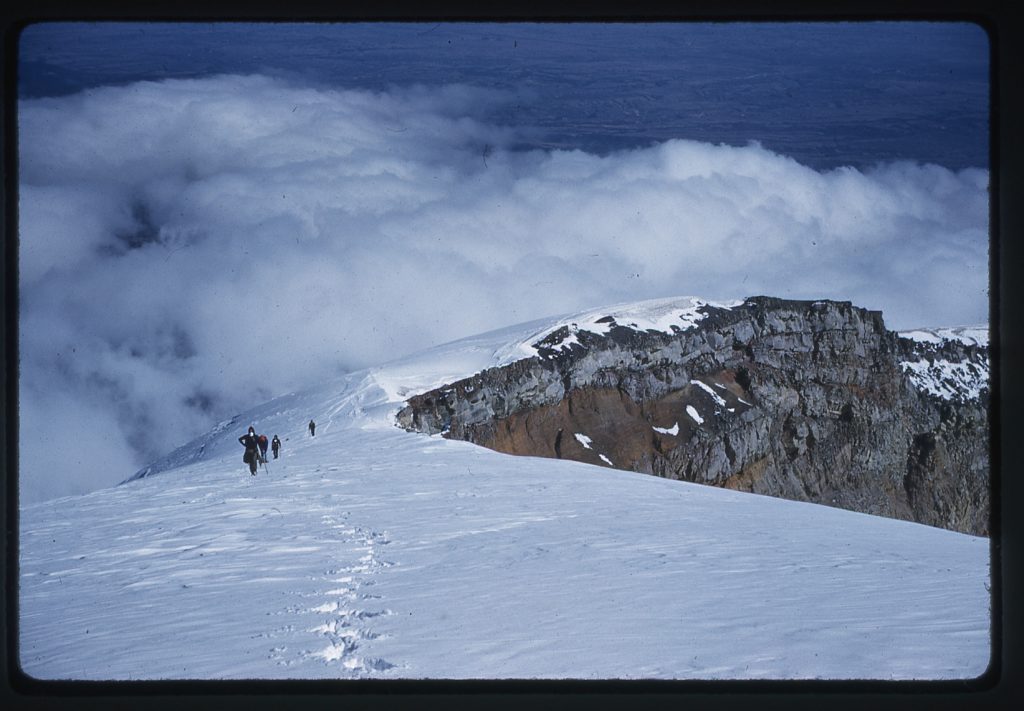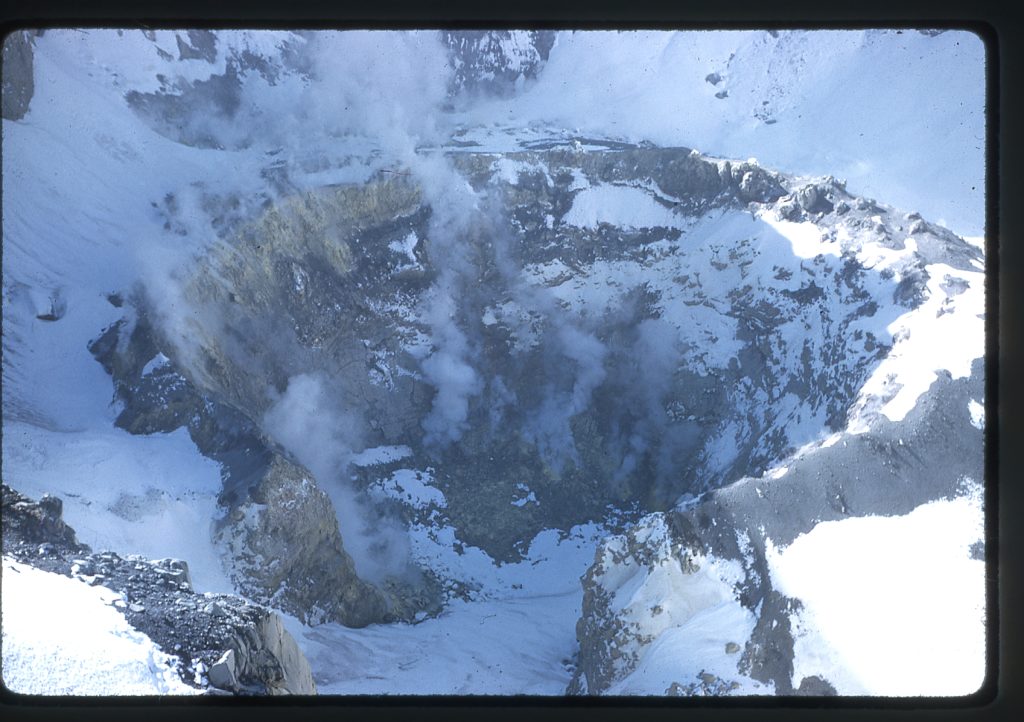Back in 1976, I lived in a small town in British Columbia, Canada. By that time, I had been climbing for 14 years and I figured it was high time to try something new. Why not make it exotic and a bit bold? Hmmm, what would fill the bill? For years I had known about the big volcanoes down in Mexico, and knew they could offer a chance to get up really high without having to travel so terribly far. After giving it some thought, it seemed like the right thing to do. During the spring of that year, a beautiful comet was gracing the skies of the Northern Hemisphere – known as Comet West, it was one of the most amazing sights I’d ever seen in the sky. Even at 49 degrees north latitude, it was very bright with a long tail. Maybe it was a good omen, portending that I should head south. Besides, it’d give me a chance to avoid winter for a while, so I hatched a plan and it all seemed right.
On March 19th, a friend drove me to Vancouver International Airport and dropped me off. I had all my gear in a large backpack, everything I’d need to climb some high, cold peaks – clothes, sleeping bag, ice axe, crampons. I checked in at the ticket counter for Canadian Pacific Airlines and gave them my gear, joking that they’d better not lose it as everything I had was in that pack. We were airborne by 11:45 AM, and I settled in for the flight.
We flew non-stop to San Francisco, arriving at 2:30 PM, but there were delays on the ground. By the time we took off again for the next leg, we arrived late in Los Angeles, where I barely made my connecting flight with Western Airlines. Finally airborne in our DC-10, we had a good flight, good food – all was going well.
At 9:40 PM, we touched down in Mexico City – it had been 4 years since my last visit here. Waiting at the baggage carousel, I realized something was wrong when all the other passengers had retrieved theirs and I was left standing there with none. First, there was the fear that something had gone terribly wrong – here I was, a stranger in a strange land with nothing but the clothes on my back. That gave way to a feeling of being pissed off, so I managed to find a representative of Western and told him how unhappy I was that my pack appeared lost. He did some checking (not sure what he did, actually, as there was no internet at that time) and assured me that there had obviously been a mixup (“So sorry!”) and that my pack would be arriving in the morning on the next flight. “It damn well better!”, I spluttered, telling him that I’d come all this way to climb and couldn’t do a thing without my gear. He suggested I try back around 9:00 AM the next morning.
There was one important piece of business I could take care of, so I headed over to the Hertz car rental agency in the terminal. Before I left Canada, I’d arranged to rent a car at the airport with them, but now they told me that I couldn’t use the traveler’s checks I’d brought, only a credit card (I don’t recall if I even had such a thing in 1976). Bummer! After some asking around, I found a company called Odin which would take my checks, and I now had a brand-new Volkswagen Beetle at my disposal (the old-fashioned kind, not the new-fangled ones they sell nowadays- they were still making them at a VW plant in Puebla at that time.) I couldn’t find a cheap hotel anywhere near the airport, so opted to spend a night in the car.
What misery! – I got maybe 2 hours of sleep. Long before 9:00 AM, I moseyed on past the office and saw some large carts loaded with luggage. Gadzooks, there was my pack in one of them! It was still well before the appointed hour, so, after looking around to see that nobody was there, I grabbed my pack and hightailed it out of there. Luckily, I had gassed up the VW the night before, so there was no slowing my escape. Whew, I had dodged a bullet – honestly, I thought I’d end up spending the whole day at the airport waiting for my gear.
As I drove out of the capitol, I was struck by the terrible air pollution, the worst I had ever seen. Never mind, I was just so glad to be on my way to the mountains. Mexico City sits at an elevation of 7,380 feet, far higher than the 100 feet of my home back in British Columbia, so even spending one night there took a bit of adapting. I headed out into the countryside and, via Chalco, made my way to the town of Amecameca, where I stopped briefly to buy 5 liters of bottled water. Leaving town, I headed up a road through forest, and reached a pass known as the Paso de Cortés, at about 11,150 feet. This prominent saddle sits between two of the huge volcanoes, Iztaccíhuatl and Popocatépetl, in the aptly-named Parque Nacional Iztaccíhuatl-Popocatépetl, and lies on the boundary between the states of Mexico and Puebla. My goal was to go higher, so I followed a lesser road up to a site called Tlamacas, where there was a rustic lodge at around 12,950′ (I’ve seen various elevations for this, ranging down to 12,700′).
I parked the car by the lodge and was pondering my options when I met 2 young Mexican climbers. They took an interest in me and we started talking. Turns out they were here to do a technical ice route on Popo, and suggested I tag along with them. I knew that wasn’t the route for me, but at least our paths could coincide for a while. They gave me a few minutes to get organized, and I shouldered my pack.
There was a wide path, more like a cinder road, that we started up. It was Saturday, and with the mountain’s proximity to Mexico City, one of the world’s largest cities, there were many people up there just for the day. The path was pretty crowded, people of all ages enjoying the spectacular views of Popo. As we walked along, talking excitedly, I started to feel odd. Things were definitely not right with me – I had a headache, getting worse by the minute, and I started to feel nauseous – classic symptoms of acute mountain sickness. I was gasping for air with the exertion of carrying the heavy pack. Before long, I had to stop. Off came the pack, and I sat on the side of the path, vomiting. A family passing by felt sorry for me – I still remember the grandmother, a sweet lady, patting me on the head and saying “Pobrecito”. Mountain sickness has to be experienced to be appreciated, but let’s just say that I felt like hammered dog shit.
The climbers felt badly for me, but they’d seen lots of folks try to go up too fast on this big mountain and knew I’d rushed things. It was obvious to all that I wasn’t going up today, yet they had to keep going – they were perfectly acclimated and so weren’t having any problems. As a sign of friendship, one of them took off his jacket and with his knife cut off the crest of their climbing club which was sewn on it. He offered it to me as a memento of our meeting and, as crappy as I felt, I was moved by the gesture. I still have it to this day. It shows a picture of a snowcapped mountain with a roadrunner and an ice axe. The name of their club in Mexico City was Alpino Correcaminos, or “Alpine Roadrunners”.
They said goodbye and headed on up the mountain while I turned around and headed back down to the lodge. I felt awful, so decided to spend the night at a nearby primitive campground. Try as I might to relax, I was having a hard time. As I was still around 12,500 feet, I realized that I was still up too high – my resting pulse was 110 beats/minute. I had to get to a lower elevation, so down the mountain I drove, stopping at a spot in the forest near the road at around 11,000 feet. The noise of the passing cars irritated me and I had a hard time falling asleep, but finally gained a few fitful hours of rest.
The next morning, Sunday, I drove back up to the lodge, determined to make a go of it. I found a young boy, maybe 12 or 13 years of age, (whose father worked there), and made a deal with him to keep a sharp eye on my rental car. I gave him a few dollars, and promised more upon my return if the car came through unscathed. My pack was ready, and I started back up the path once again. I felt rough, still with a headache and fighting the nausea, but plodded along, ever so slowly. Soon after starting out, I met my 2 Mexican friends from yesterday – they were on their way back down after a successful ascent. They warmly wished me luck, and I carried on up the mountain. The wide path diminished to a narrow track, but well-trodden – it was very easy to follow. Finally, after 4 1/4 hours on foot from Tlamacas, I reached what was called at that time the “Tres Cruces” hut at around 14,500 feet elevation.
What a relief to finally be there! Much to my surprise, the place was deserted. Not only did I have it to myself, it appeared that I had the whole mountain to myself. As the afternoon progressed, I realized that all the people I’d seen yesterday were probably locals and sightseers just up for the weekend. The hours passed and I didn’t see another soul. What a spectacular spot – it seemed like you could see forever in the clear, high winter air. Orizaba, the country’s only higher peak, could be easily seen 100 miles to the east.
The hut was one big open room with a plywood floor. No facilities of any kind, just a shelter from the wind – no water, no stove for heat or cooking, but that was fine by me – it seemed like a palace. There were even a few mice to keep me company – they must have survived on the leavings of visitors who passed through. I had snacks I had carried up, just enough to keep hunger at bay, not that I had much of an appetite anyway as I was still fighting off the nausea. I actually wished that somebody would drop by for some company, but no one did. The temperature was +50 degrees F during the sunny afternoon, and it only dropped to around freezing overnight. I slept poorly, waking several times.
When I couldn’t stand the tossing and turning any longer, I got up – it was 4:30 AM. It was pitch black outside, and I still felt like crap. I was moving slowly, so by the time I finally walked out into the chill night air it was 6:20 AM. My altitude sickness wasn’t going to stop me from getting this summit, even if it killed me – okay, maybe a bit of an exaggeration, because acute mountain sickness can kill you, but I was determined. Moving painfully slowly up the snow slope, I gained elevation bit by bit. The sunrise was breathtaking and unforgettable – I had plenty of time to enjoy the view, as I was moving so slowly. Around mid-day, I reached the crater rim – my God, it was spectacular! – I had never seen anything like it. My friend Barbara Lilley took this picture while on her trip to the peak in 1958, and kindly let me use it to show you how dramatic the crater’s edge is.
Truth be told, it was the first time I’d ever looked down into a crater anywhere, and I wasn’t disappointed. There was smoke coming from the bottom of it, and a strong smell of sulphur.
The edge of the crater was steeply inclined, so even though I’d reached the lower edge of it, I still had another thousand vertical feet of climbing to do to reach the summit. By the time I reached the highest part of the mountain, it was 1:45 in the afternoon. It had seemed like I’d never get there, and it was a full 7 1/2 hours after I’d left the hut. There was nobody else, just me – I hadn’t met anyone on the way up, and I had the summit to myself. There I was at 17,802 feet elevation, by far the highest I’d ever been (my previous high point was the summit of Gray’s Peak in Colorado, at 14,278′). If I hadn’t been feeling so crappy, I’d have been more euphoric about my accomplishment.
The crater was huge, about 1,300′ by 2,000′, and very deep – it was frightening to look down into it, as its walls were from 2,000′ to 2,700′ in height, and very steep and rotten. If you fell in, you’d certainly die. Here’s a good example of how spaced-out I was feeling – I decided to tighten my crampon straps, and it took me a full 45 minutes to complete that simple task. A few clouds started to build up, and it seemed like a good idea to start down. I’d spent one hour on the summit.
There’s not much to tell about the descent. When I got down a ways, the snow had softened up, off came the crampons and I was able to do a boot glissade much of the way. It was 5:00 PM when I walked back through the door of the hut. I was very tired, still feeling sick and had no appetite at all, but I had my peak and that counted for something. I hadn’t seen another soul all day, and there was still nobody at the hut. Crawling into my sleeping bag, I slept much better than the previous night.
By the next morning, things on the mountains had changed. I had slept late, and as I was readying my pack to leave, 3 different sets of climbers stopped by the hut on their way to the summit – obviously they were moving far more quickly than I had. The mountain was being re-populated. I made quick time down the trail, and was back at the lodge by 11:00 AM. The young fellow had taken good care of my VW and I tipped him well, then drove down the mountain to Amecameca. By the time I had reached the town, at a mere 8,140 feet elevation, I was breathing so much oxygen that I felt like Superman. All symptoms of altitude sickness had disappeared, and I was ravenous. I picked a restaurant in the center of town and ate a big, satisfying meal, savoring my successful (if somewhat slow) climb of North America’s 5th-highest peak. Oh yes, one more thing – I still have a small piece of rock I brought down from the summit, a treasured souvenir of March 22, 1976.
Many thanks to my friend Barbara Lilley for the use of her photos in this piece, from her 1958 climb of Popo.




